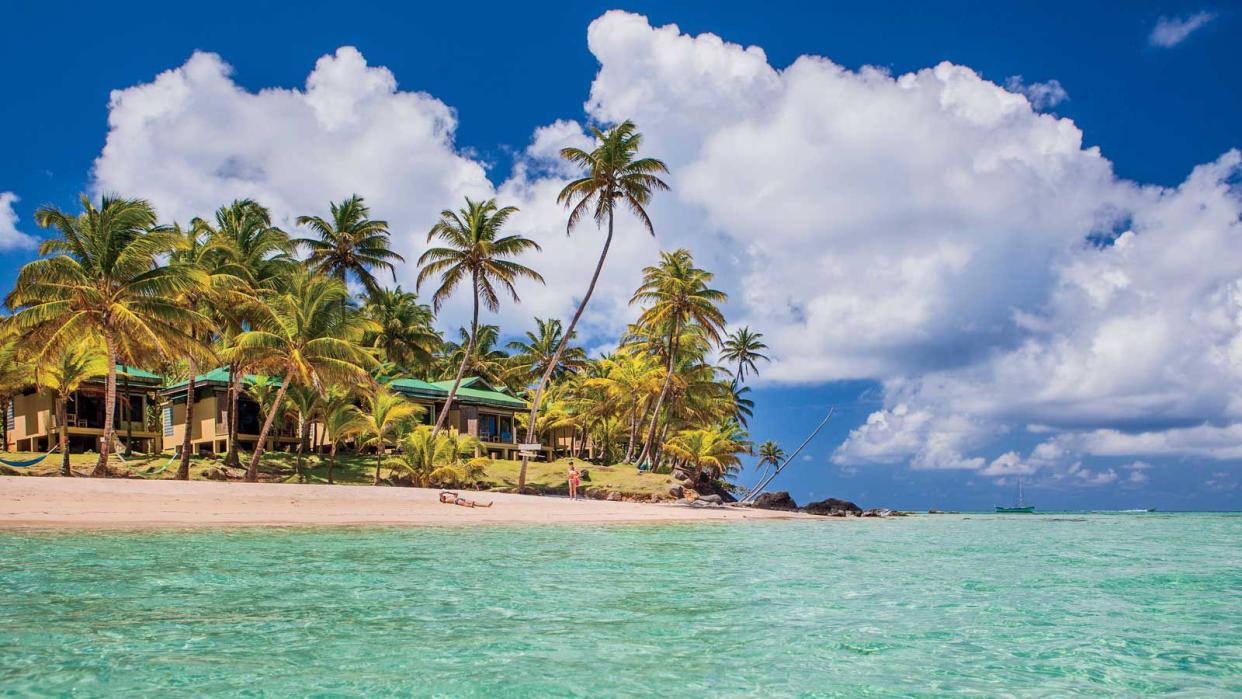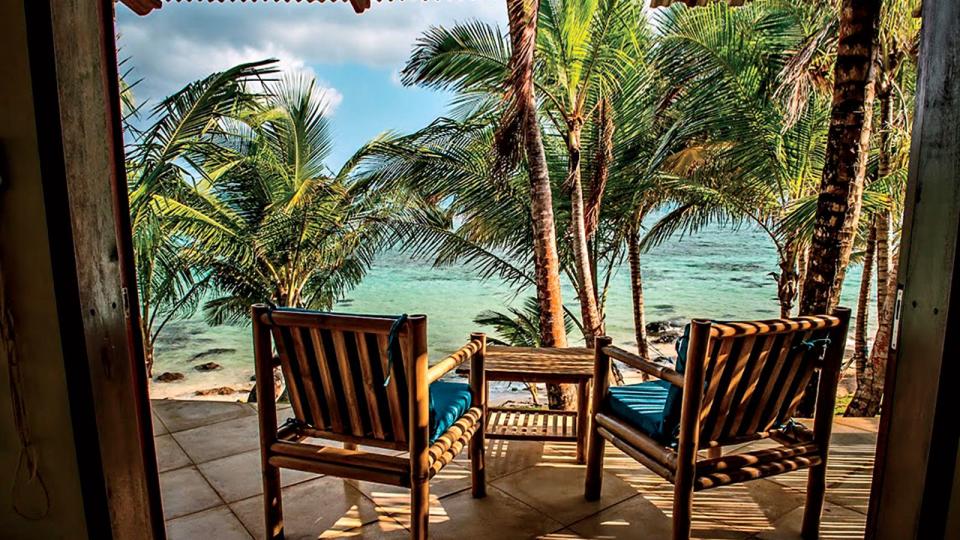This Tiny Island Off the Coast of Nicaragua Is an Underrated Caribbean Paradise

Courtesy of Yemaya Island Hideaway
My mother always said, "You don't just marry a man, you marry his whole family." When I wed Emilio, I got his entire country — Nicaragua. We go there frequently, so I've managed to see most of his homeland's greatest hits: the Spanish-colonial city of Granada, a handful of dormant volcanoes, and the Pacific beaches loved by surfers. But I'd been married to my Nicaraguan husband for seven years before we made the trek to Little Corn Island, and I'm still a little resentful about that oversight.
To be fair, most travelers can't fit Little Corn — the smaller of the two Corn Islands, situated in the Caribbean 50 miles off Nicaragua's eastern coast — into their mainland itinerary. "It's too far," Emilio always said, what with the hour-long flight in a prop plane from Managua to Big Corn, then a 30-minute ride in an open-air panga boat. Even among his many relatives and almost-relatives — Nicaraguans don't have friends, they have "cousins" — only a few had ventured out there. But those who had been spoke of Little Corn as the most romantic place in Nicaragua. As one of these so-called cousins said, "I went with a boyfriend, and I came back with a baby."
Hearing her tales of sailing by day and eating lobster dinners at night, I developed a vision of a long weekend spent sunning on white-sand beaches, swimming in turquoise waters, and drinking adult beverages out of coconut shells while my mother-in-law looked after our two children back on the mainland. I decided to pursue my dream by booking at the only upscale property on Little Corn, Yemaya Island Hideaway & Spa (doubles from $250), a collection of 16 eco-cottages dotting the beach.

Courtesy of Yemaya Island Hideaway
When we landed at the tiny airport on Big Corn, I saw that Emilio was half right. The Corn Islands are far — but the distance is cultural as much as it is physical. Colonized in 1655 by the British, rather than the Spanish who ruled the rest of the country, Nicaragua's eastern coast has its own blend of Afro-Caribbean cultures. Its locals speak English, Creole, and native languages, including Garifuna and Miskito, as well as the Spanish they learn in school. On Little Corn, the population hovers around 850, mostly descendants of the slaves freed from the four families who colonized the area.
I understood that Little Corn is a world apart from the rest of Nicaragua. It was in the cab to the panga, though, that I began to feel it. "The boat ride will be calm, because they're not killing lobsters today," the cabbie informed me. "When you take from the sea, she gets angry." I'd never heard such romantic assertions over ceviche at Mukul, the most glam seaside resort on Nicaragua's Pacific shore.
Our sailing — accompanied by American honeymooners and a chic French couple, all blond hair and tan limbs — was relatively smooth, and when we stepped onto the sand at Yemaya we were met by staffers bearing fresh juice and chilled washcloths. Yemaya is part of the barefoot-luxe Colibri Boutique Hotels group, whose other four properties are in Tulum, Mexico. Which is not surprising, as Little Corn recalls Tulum before the massive resorts moved in.
At first glance, Little Corn looks like your universal Caribbean fantasy. But as we walked along the one "road," a cobblestoned path that locals use to roll wheelbarrows from one coast of the 1?-square-mile island to the other, I felt a distinct sense of place. We passed a baseball field where the local team plays its rivals from Big Corn, as well as cottages painted Caribbean pinks, blues, and oranges, from which women sell homemade coconut bread to kids in school uniforms, backpackers in cutoffs, and sun worshippers in caftans. Foot traffic is the only kind there is on Little Corn — motorized vehicles, even golf carts, are prohibited.
For me, the island was an ideal blend of quiet, with its spotty Internet and lack of cars, and lively, given the mix of cultures and people. I found the same delicate balance offshore as well. In the morning, as we paddleboarded along the coast, we'd wave at the other early birds bobbing in the warm water — both the human ones and the white crane who sometimes perched on the boulder opposite our cottage. We snorkeled with Barracuda, a Miskito sailor, who would point out the stingrays and nurse sharks floating past. He showed the same cheerful unflappability when we took a sunset sail on his wooden boat the next evening. Emilio and I sipped champagne while Barracuda lay on a long plank extending over the ocean, balancing the boat's weight.

From left: Flash Parker; Shikha Kaiwar
Back on land, we had fragrant facials in the spa huts and did yoga in the open-air studio. We even toured the resort's gardens, where all the greens eaten on site are grown. As we watched a marauding bird steal a papaya, I asked the golden French couple — they seemed to be experts in sustainability and composting — what had brought them to Yemaya. The wife said she had wanted to go someplace far from everything else. Where did they normally live? Paris, where she does PR for the Ritz.
The boho-chic Europeans and adventure-seeking honeymooners had me worrying Little Corn might become Tulum 2.0. Yemaya has responded to an increase in tourism with the addition of private pools and the introduction of a twin-engine boat to make the ride from Big Corn more comfortable. But as I sipped my last Coco Loco, I reassured myself that Little Corn will always feel like no place else. It's inherently hard to get to, and there's no room for large hotels. None of the beaches are private, so you will always run into backpackers who have come to dive. The Miskito sailors will continue to lie on boards floating over the ocean.
When I Instagrammed photos of our trip, Emilio's relatives commented, from their condos on the Pacific coast, "Where are you? Still in Nicaragua?"
"Of course," I typed back, falling just a little bit deeper in love with the country I'd married.